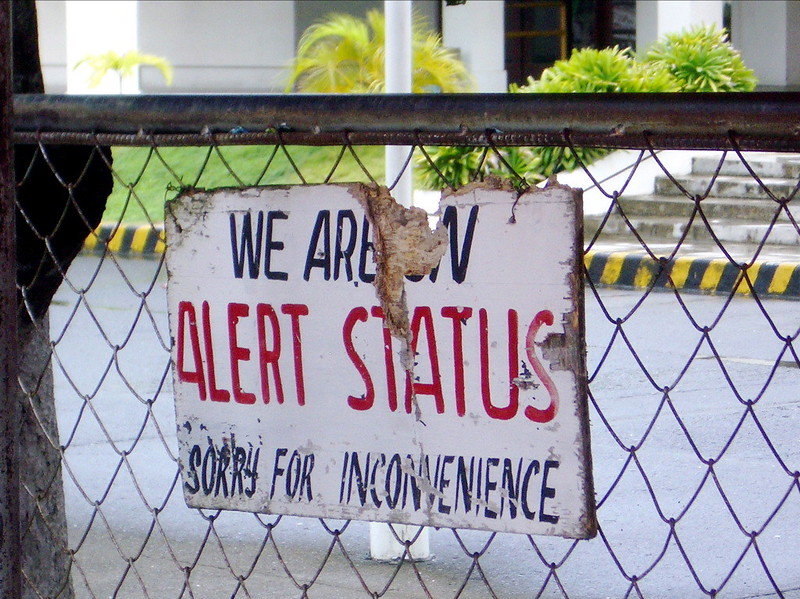
Image Credit: Jeff Youngstrom
Let’s face it, there are a lot of things that go on each day that require our attention. It may be when people drop by to ask us a question, but more often than not it’s something electronic. It could be as simple as when a new email pops up in your in basket. It could also be when Microsoft Teams signals that someone is trying to call you. No matter what the source, it’s a distraction. How can we help our teams deal with all of the alerts that they are getting?
Too Many Alerts, Not Enough Time
Managers need to realize that we’re all on alert overload. Stray comments and offhand requests that were once shouted across the office now show up by blinking and buzzing at us from Slack and Microsoft Teams. These days our communication has grown fragmented. It is spread across myriad apps that we have to learn, conform to, and remember to check. Meanwhile, our personal texts and our social-media mentions have bled into our workday after spending all this time at home. This adds another layer of distraction to our time on the clock. Why should you put your phone on silent if someone isn’t hovering over you?
Managers need to understand that our culture has evolved to accommodate rapid communication. The result is that it can be mentally taxing. Many team members struggle to conjure up that brilliant thought that hit right before the latest notification burst into their day. Mangers need to understand that our memory is overflowing with information.
Dealing With Too Many Alerts
The good news is that there are ways managers can contend with the onslaught of alerts. Research finds that people switch screens an average of 550 times a day. This switching occurs half the time when we’re interrupted; the other half happens when we pull ourselves away. Breaks – even mindless ones like scrolling Instagram – can be positive and replenish our cognitive resources.
When something external diverts our focus, it takes us an average of 25 minutes to get our focus back to our original task. It is common for team members to switch to different projects in between. All of this stresses us out. Research that was done using heart monitors showed that the interval between people’s heart beats becomes more regular when they’re interrupted. This may sound like a good thing, but it’s really a sign they’re in fight-or-flight mode.
The onus is on teams and organizations to create new norms. If team members just up and turn off their notifications they’ll likely be penalized for missing information. Instead, managers should look into creating quiet hours where people aren’t expected to respond. This is a matter of relearning how to work. One thing that members of your team can do is to turn off notifications for 25 minutes to focus, then take a five-minute break afterward. Those on your team with longer attention spans should aim to hunker down for 52 minutes, then take a 17-minute break.
What All Of This Means For You
I’m not sure if it is a good or a bad thing, but we have the ability to stay alert and aware of many more things these days than we have ever been able to do before. One of this biggest challenges that we are all facing every day is how to deal with all of the alerts that are now trying to grab our attention. Sure they are important; however, it seems like there are just too many of them.
It is the responsibility of managers to realize that we have become overwhelmed with alerts. There are simply too many of them coming at us from too many different sources. Our personal life has slowly started to merge with our professional life and now we get alerts from both sides all day long. We need to find a way to deal with all of these distractions. Switching between screens too often results in a lot of wasted time. Our teams have to create new ways of doing business. Managers need to be willing to create quite hours where team members are not expected to respond to alerts. Let your team members turn off their alerts for a period of time and get some work done.
Alerts have their place, but it’s not all the time every day. Managers need to understand this and we need to work with our teams in order to help them come up with ways to deal with all of the alerts that they are receiving. The good news is that we are in a position to do this. We need to understand the challenges that alerts pose to our team and we need to take steps that will help them deal with all of the alerts that they are currently getting.
– Dr. Jim Anderson
Blue Elephant Consulting –
Your Source For Real World IT Management Skills™
Question For You: Do you think that managers can afford to allow their teams to go offline for any amount of time?
P.S.: Free subscriptions to The Accidental IT Leader Newsletter are now available. Learn what you need to know to do the job. Subscribe now: Click Here!
What We’ll Be Talking About Next Time
So just exactly how much pressure are you currently under? If you are like most managers, the answer is “a lot”. The arrival of the Covid-19 pandemic just made things a lot harder for managers. In order to be successful managers, we need to understand that we pretty much live with a great deal of pressure. This means that we have to be able to find ways to deal with the pressure. It is only by being able to do this that we will be able to be successful.
